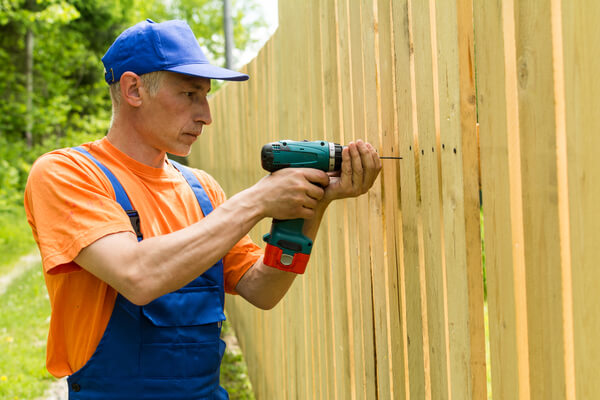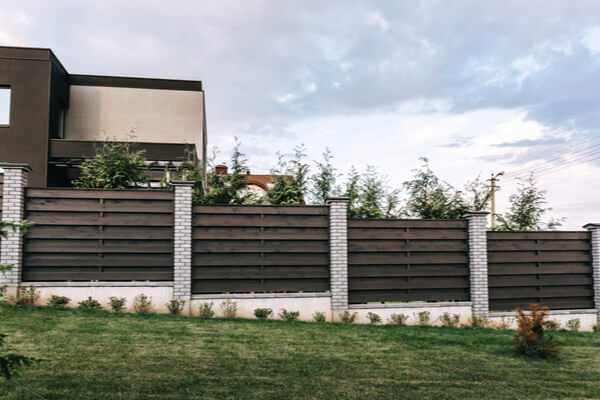Fences help maintain the security and privacy of your property. Whether you’re living in an urban neighbourhood or in the countryside, building a strong fence will provide an assurance of safety for your family. Based on your design choice and budget, you can choose any type of fencing option to be laid around your home. However, before you hire a contractor and start digging the ground, make sure you have open communication with your neighbours about the cost, height and location of the fence, among other things.
Here are a few questions many Canadian homeowners face when it comes to adding a fence between houses.
Who Owns the Fence?

Based on whether you have a detached or semi-detached house, the options for a fence between houses will change. When you purchase the property, make sure you understand where the fence line is located. It can be on your property, on your neighbour’s property or on the boundary line.
If it’s on your property, you own the fence line and can make any changes to it while adhering to the local fencing guidelines. However, your neighbour may ask for permission to paint or make design changes to their side of the fence. Here, you reserve the right to give permission to make any changes. Similarly, if it’s on your neighbour’s property, you will have to ask for permission to make changes to your side of the same fence.
If the fence is on the boundary line and you want to make any changes to it, you may have to seek permission from the local fencing authority along with official consent from your neighbour. You can contact your province’s urban planning or agriculture department to find out more about local fencing laws.
Pro Tip: Asking for or giving permission for any fencing changes often leads to disputes amongst neighbours. We recommend that you create a formal paper trail in either case to avoid any misunderstandings and lawsuits.
Who Pays for Repairs and Maintenance of the Fence?

Each province in Canada has a governing body or fencing authority that deals with matters of line fence repair and maintenance. Based on which province you’re located in, the guidelines for repair and maintenance of the fence will change. If the fence is rotting, broken or damaged, you can split the cost with your neighbour and get it fixed together following a mutual agreement and open conversation. However, if there are arguments over how the fence was damaged, what type of repairs should be made or the division of cost, you can hire a dispute resolution manager to look into the matter. The local line fencing board will help you resolve the matter of cost division for the repair and maintenance of the fence.
Who Decides the Design and Height of the Fence?
As mentioned above, you can discuss and decide the design and type of fencing with your neighbour or ask the fencing board to help you decide the details of the project.
The height of the fence will be determined by the location of your property. In Canada, the common height for a front yard fence is 3 feet and backyard fences are between 5-6 feet. To confirm the fencing height requirements in your neighbourhood, we recommend you talk to a local fencing pro who knows the guidelines and how to apply for specific fencing permits.
Who Gets the ‘Good’ Side of the Fence?
There is no specific rule as to who gets the ‘good’ side of the fence. However, it is considered courteous and polite to keep the fence on your neighbour’s side smooth and finished. This is a good way to avoid any disputes and maintain a positive relationship with your neighbours.
What Is Double Fencing and How Does It Work?
Double fencing or double-sided fencing is the best way to avoid any type of fencing conflict with your neighbour. This type of fence looks similar on both sides hence resolving any questions related to who gets the ‘good’ side! You can hire a local pro with your neighbour who will help you choose the right material and install the fence whether it’s on either of your property or on the boundary line.
Installing or replacing a fence, running regular maintenance checks and repairing it can be a tedious process. Disputes over fence maintenance with your neighbours can degrade its quality and add to the frustration of finishing the project. We recommend you talk to a local fence contractor to understand the fencing rules and take equal responsibility with your neighbours to maintain the fences between houses.
